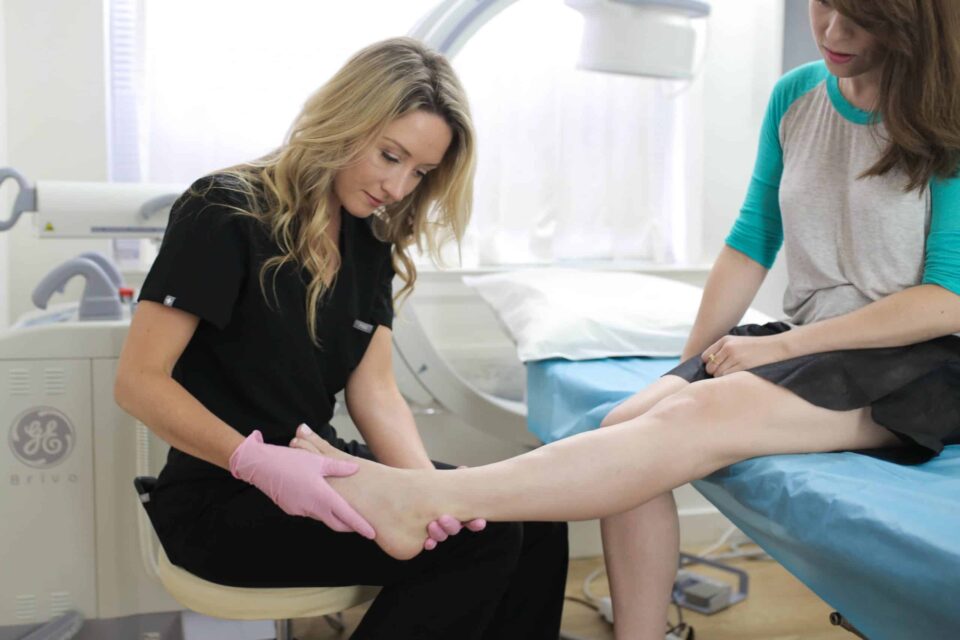Varicose veins affect millions of people across the U.S., causing both cosmetic and physical concerns. From aching legs and swelling to twisted, bulging veins that affect self-esteem, this condition deserves prompt attention. Fortunately, what are the treatment options for varicose veins has a promising answer—especially with the rise of minimally invasive procedures. These modern techniques offer effective solutions with fewer complications and quicker recovery times than traditional vein stripping surgeries.
In Vein Treatment New Jersey centers, patients now have access to innovative technologies that don’t require long hospital stays or general anesthesia. Instead, specialists use advanced imaging, heat, medication, and medical-grade adhesives to close off or remove the damaged veins. The goal is to improve circulation, reduce symptoms, and restore the appearance of the legs with minimal discomfort.
Table of Contents
How Do Minimally Invasive Procedures Work?
Minimally invasive varicose vein treatments are designed to close off the affected veins, rerouting blood flow through healthier vessels. These treatments are usually performed in outpatient settings, such as specialized Vein Treatment New Jersey clinics, and typically take under an hour to complete.
Here are the most common techniques:
- Endovenous Laser Therapy (EVLT) – A tiny laser fiber is inserted into the affected vein. The laser emits heat, sealing the vein from the inside.
- Radiofrequency Ablation (RFA) – Similar to EVLT, but it uses radiofrequency energy to heat and collapse the vein.
- Sclerotherapy – A solution is injected into the vein, causing it to scar and close. This is especially useful for smaller varicose veins and spider veins.
- VenaSeal™ (Medical Adhesive Closure) – A safe, medical adhesive is injected to glue the vein shut. This method doesn’t require tumescent anesthesia.
- Microphlebectomy – Small incisions are made, and the varicose veins are removed with tiny surgical tools.
These methods are highly effective and have a success rate of over 90% when performed by experienced vein specialists.
Why Choose Minimally Invasive Treatments Over Surgery?
Traditional vein stripping required hospitalization, general anesthesia, and weeks of recovery. In contrast, minimally invasive procedures allow patients to return to normal activities within a day or two.
Advantages include:
- Minimal scarring or no scarring
- Local anesthesia instead of general
- Shorter procedure time (usually under an hour)
- Little to no downtime
- Lower risk of infection or complications
- High success rates with long-term effectiveness
In Vein Treatment New Jersey clinics, these benefits are standard, making treatment more accessible and less intimidating for patients.
Are Minimally Invasive Treatments Effective for All Varicose Veins?
While minimally invasive treatments are highly effective, they’re not always one-size-fits-all. The best option depends on the size, location, and severity of the varicose veins, as well as the patient’s overall health. That’s why consultation with a qualified vein specialist is essential.
In many cases, multiple treatments may be recommended. For example, a patient might undergo EVLT to close a large saphenous vein, followed by sclerotherapy to address smaller residual veins. Most patients notice significant improvements in symptoms like leg pain, swelling, and skin discoloration within a few weeks.
How Do You Know If You’re a Good Candidate?
Anyone experiencing symptoms of varicose veins—such as aching, swelling, heaviness, or skin changes—should consult a vein specialist. During your initial visit to a Vein Treatment New Jersey clinic, a specialist will perform a physical exam and may use duplex ultrasound to visualize blood flow and pinpoint vein damage.
You may be a good candidate for minimally invasive treatment if:
- Your veins cause discomfort or cosmetic concerns
- You have a healthy vascular system aside from the affected veins
- You’re not allergic to treatment components (e.g., adhesives or sclerosing agents)
- You’re not pregnant
- You can wear compression stockings after the procedure
It’s important to disclose your medical history so the physician can recommend the safest and most effective option.
What Is Recovery Like After the Procedure?
Another major benefit of minimally invasive vein treatments is the fast recovery time. Most patients can walk out of the clinic and resume light activity the same day. You may be advised to wear compression stockings for one to two weeks to help blood flow and support healing.
Side effects are generally mild and include:
- Minor bruising or swelling
- Slight tenderness at the treatment site
- Temporary skin discoloration
These symptoms usually subside within a few days to weeks. It’s crucial to follow your provider’s post-treatment care instructions, including avoiding heavy lifting or standing for long periods for the first few days.
Where Can You Get Expert Vein Care in New Jersey?
If you’re asking what are the treatment options for varicose veins and want reliable, modern care, look no further than specialized Vein Treatment New Jersey clinics. These centers are staffed by board-certified vein doctors, vascular surgeons, and interventional radiologists with extensive experience in treating venous insufficiency.
Top centers typically offer:
- State-of-the-art diagnostic tools (e.g., duplex ultrasound)
- Personalized treatment plans
- Insurance coordination assistance
- On-site procedures without hospital referral
Before choosing a provider, make sure they are board-certified and have a proven track record with minimally invasive procedures. Reading patient reviews and checking credentials can help you make an informed decision.
Can Insurance Cover These Procedures?
Most insurance companies recognize varicose vein treatment as medically necessary when symptoms like pain, swelling, or skin ulcers are present. Cosmetic-only procedures (like treating spider veins) may not be covered. A Vein Treatment New Jersey specialist can help you navigate the approval process by documenting medical necessity with diagnostic ultrasound and symptom history.
You may need to try conservative measures first—such as compression therapy or leg elevation—before insurance approval. But once you’re cleared, the cost of minimally invasive procedures is often covered fully or partially by your plan.
What Can You Expect Long-Term?
Minimally invasive vein treatments offer long-lasting results when paired with healthy lifestyle habits. Most patients report lasting symptom relief and improved leg appearance for years after treatment. However, because vein disease is progressive, new varicose veins may form over time, especially if you have genetic predisposition, a sedentary lifestyle, or a job that requires prolonged standing.
Preventive care includes:
- Staying active and maintaining a healthy weight
- Wearing compression stockings as recommended
- Elevating your legs when possible
- Following up with your vein doctor regularly
Your commitment to vascular health can extend the success of your treatment and reduce the need for future procedures.
Conclusion: Are Minimally Invasive Treatments the Right Choice for You?
So, can minimally invasive procedures treat varicose veins successfully? The answer is a resounding yes. With cutting-edge techniques now widely available in Vein Treatment New Jersey clinics, patients can receive fast, effective, and safe care without the risks associated with traditional surgery.
If you’re wondering what are the treatment options for varicose veins, it’s time to consider a consultation with a vein specialist. The right care can not only relieve pain and swelling but also help you feel confident in your appearance once again. Don’t let varicose veins hold you back—modern medicine offers the solutions you need.

